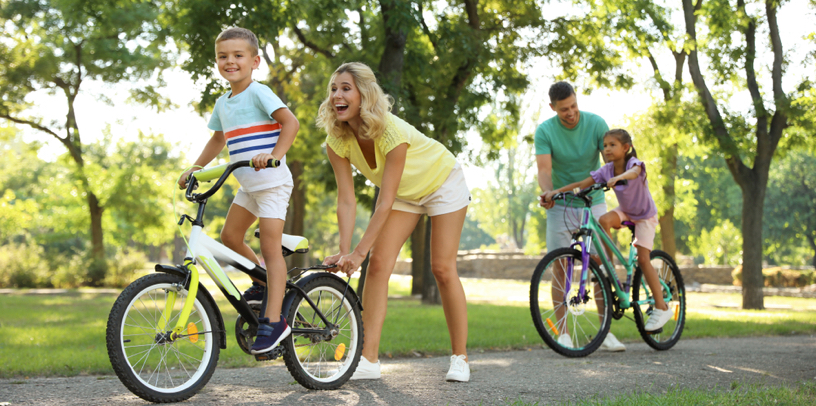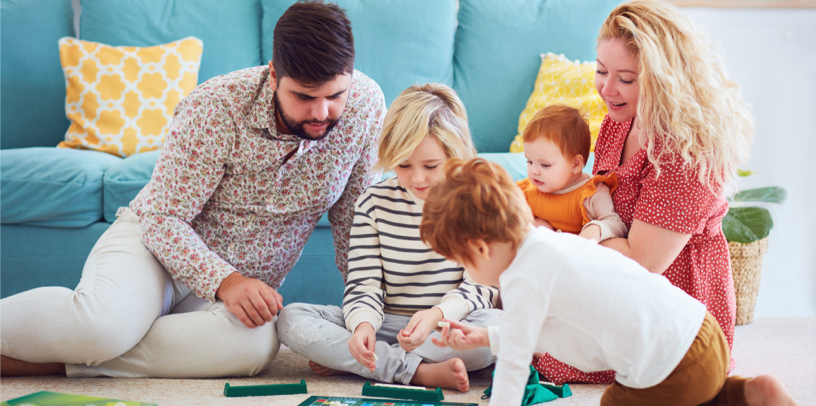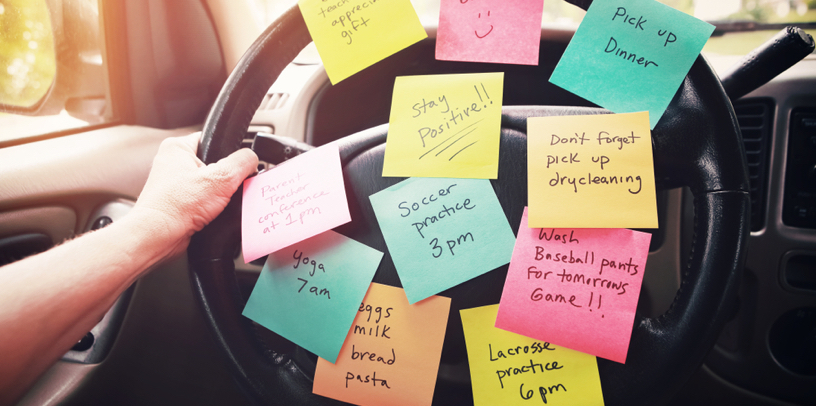
There are countless activities a parent and child can do. Some of them may be more impactful than others. Finding the best ideas—in line with personal preference, budget, or Corona limitations—is not an easy task.

Here is our guide for making the most out of your valuable family time whether it is during the weekends, day-to-day family time, or vacations. Enjoy!
P.S: Links to this article might not apply to your region. You are welcome to subscribe and get notified once we personalize this specific article to your region.
Face it—with the littlest one’s, even summer’s most kid-friendly vacation is rarely a vacation. Any time together is a blessing in its way. But those long hot days often look like: sunblock, jungle-gym, snack, diaper, sleep (them, not you) … then repeat till autumn. So, it is a happy evolution when the cranky baby turns into a pudgy toddler turns into an antsy preschooler—and then, behold, you have a curious child, ready to explore the world with you for the next twelve summers!
Before you start haphazardly Googling “kid-friendly restaurants near me” and stockpiling hand-me-down Nerf guns, here is our best guide to meeting your child where they are at in each of those precious summers. We’ll help you decide how to use your time and resources wisely and meaningfully. We’ll offer ways to enjoy the juicy summer moments and also add thoughtful layers to your child’s life-long development. We won’t just pound you with a list of activities, we’ll help you actualize what you truly value from this time. These ideas could be led by either a parent or a caretaker, and they could be the anchor for the whole season or integrated around more formal programming like camp. Enjoy!
This summer is all about wild adventure and exploring the world—albeit from a discreetly measured environment. Your child may need a basic daily routine —and sometimes a confidence boost—but is also active, curious and thirsty for fun activities for 1st graders.
The Perfect Plan: In your Perfect Plan, you have all the time, resources, budget, and mobility you need.
Build the week around swim lessons. If your child never formally learned swimming before, this skill is crucial. But even if your child already knows how to swim, practicing different strokes and building stamina is nearly as important. Local group swim classes are $50 per lesson, but it’s a good investment in your child’s self-confidence and well-being, in a safer community—as well as in your own peace of mind for anything that might happen.
You can develop a day or two as well as a complete week around the best local zoo or aquarium. Chances are you’ve already spent time there and maybe already have a membership. But the intensive summer programs and camps are unique, with concentrated explorations and hands-on instruction. Plus, the natural world is endlessly fascinating up close, and at this stage, kids will enthusiastically embrace that. Sculpt the experience to lead up to summer travel. For example, if you will be spending a week at the beach, let your child become an authority on marine life. Or if you are going to the mountains, they can get to know the bears. Your child will gain a surge of confidence from feeling like a wildlife expert, and will certainly come away with a greater understanding of the importance of our environment. As an example, The Bronx Zoo membership is $170 per family. The Monterey Bay Aquarium membership is $250. Both of them offer great projects that can be further explored on their web sites as well as in a live visit. The Bronx Zoo now has camp online—full-day programs for this age like Animal Olympics and also Animals & Art. The best part: The structure, the group activities, and the engrossing dynamics of wildlife will keep you from having to reinvent the wheel each day!
The Nearly Perfect Plan: Our Nearly Perfect Plan works with a tighter budget or if you’re staying closer to home, for example, because of Covid 19 (Corona Virus).

Get your child to do some next-level bike riding this summer, especially in the cooler morning and early evening hours. If they’re still on training wheels, take them off gradually and safely. If they’re just riding in front of the house, let them ride more independently around a wider segment of the neighborhood where you can still keep an eye on them. Or get a workout yourself and go on long bike rides together exploring diverse areas around you locally, or set distance goals. Kids’ bikes can be found for under $200, and if you have a baby in tow, you can attach a bike seat to your own bike and keep them with you too. The exercise, mobility, and confidence that come with being a full-blown bike rider at this age will give each summer day a new sense of adventure. Not only will you be nurturing a life-long habit that is healthy and environmental, but your biker’s independence will eventually buy you some free time of your own while your kids are working to minimize our carbon footprint.
Complement this physical exploration with the ultimate escape of imagination: reading. The Magic Treehouse Books send two curious kids off into ancient Egypt, the North Pole, the age of the dinosaurs, and more. Nurture that important love of reading (and adventure). A collection of 28 books is $88 but they can also be found at your local library and if any books are missing there, they can be borrowed from other libraries in the system. And you can enhance the reading with hands-on projects crafted around the time and place at the center of each book: cook a dish inspired by Japan and pick up some green tea mochi, or traditional ice cream balls covered in sweet gelatinous rice dough. Or make a video/skit enacting medieval knights. Even if your child (and you) are house-bound, it’s still possible to expand horizons about different countries and cultures.

Once you put a core plan into place, be sure to have a jam-packed, glittery toolbelt filled with other fun activities, projects, and knickknacks to make for a well-rounded day.
Building Toys: Your child has likely been playing with building toys for years, but this summer they have the capacity to build in a more complex way. A starter pack of Magna Tiles is $50. Invest in a few age-appropriate Lego kits for the 6 to 8 range—a fierce-looking dragon can run you around $20. A box of Crazy Forts ($50) which includes large sticks and balls to build a life-sized fort or castle is a fun activity with ever-new indoor iterations and pretend play to follow. Outdoors, Giant Jenga at $92 is a great investment for both individual buildings and for siblings to play together. Building toys can be a real expense, but kids don’t easily lose interest in them, so your money is well spent. Any toy that engrosses a child through various stages of development is a sound investment. You can also continually suggest new challenges for them to problem-solve and create with their building toys (structures of a certain height, or something movable, or something using only certain shapes of pieces, etc.) and this will help them transition from the free-play of kindergarten to the focused exercises of 1st grade.
Board Games: Classic board games like Boggle and Scrabble (each under $15 at the Junior level) is perfect for this stage, as kids will be taking on deeper reading and language challenges in the next school year. Beat the Parents (at $27) is a great way to play trivia together, in a way that’s interesting for both parents and kids. Melissa and Doug puzzles depicting a map of the United States or the solar system are both fun and informational. . And if you can get your child excited about Chess at this stage, they will start to learn some critical skills in strategic thinking that will be important throughout life. Put in two half-hour sessions of teaching to get them rolling. The book Chess for Kids by Michael Basman will be great for kids to read themselves in the next couple of years, but if you’re looking to learn yourself or brush up on the rules and understand how to make chess accessible at your child’s level, it’s a good purchase for you now at under $7.
Outdoor Activities: Of course, you want your child to enjoy the outdoors as much as possible during summer. For the artistic child, decorating the driveway with thick pieces of sidewalk chalk can mean hours of engrossing activity. Water balloon battles are a fun (and cooling) way to keep siblings active together on what would otherwise be lazy hot days, but an only child can also enjoy running through the sprinkler solo. Develop your green thumb (and your child’s) now by growing a garden. Tending a garden is proven to make people happier, and it’s one of the few things that can prompt your child to value hard work, the environment, and healthy eating all in one shot. Even if you are living in an apartment, this 9 Herb Window Growing Kit at under $40 can wholly simulate that experience.
Camping out, catching (and releasing) fireflies, playing flashlight tag in the yard are great. In some ways, the best part of being outdoors at this age is giving your child the opportunity to be “bored.” Having not yet entered a “serious” class environment, they are still at the stage where they are less inhibited and more open to improvisation. Position them to create their own fun and devise their own thoughts for how to pass the time. They may find themselves digging a hole, observing insects, collecting shells. It’s a good way to hit the reset button, so they are not expecting to constantly, passively be entertained and managed. It requires a bit of will power on the parent’s part at first to not offer solutions but can lead to a summer and lifetime of a child actively generating creative ideas.

Indoor activities: Sometimes the rain, summer heat, and exhaustion, or perhaps your own work schedule will prompt you to plan a day at home. But there is still plenty to do inside. If your child can’t do without the screen, there are lots of good options that make sense for almost 1st graders. Minecraft, with its blocky 3-D world construction, is arguably the premier video game that is both fun and enhancing. Code Monkey is a fun, game-based way to introduce kids to programming. And get your child familiar with typing through fun keyboard games. Also, if your child happens to love a particular subject or needs to reinforce some academic skills, the Time4Learning online curriculum has videos and exercises that fit the bill and follow the Common Core standards. At just under $20 per month, it’s a good investment as your child can continue with it in the years to come, all the way through high school. Plus, it will allow you to monitor their learning, go back to have them review or advance if needed, and it can be used for full-on homeschooling.
The 5-minute Craft series on YouTube offers engaging videos of accessible projects set to fun music. They will inspire your almost 1st-grader to take on Do It Yourself (DIY) in a new way. Let them find project ideas there.
Michael’s store has all kinds of crafting and art supplies, plus terrarium materials and live butterfly gardens—they even offer $9.99 same-day delivery for any crafting “emergencies,” if your DIYer is especially intense. Sid the Science Kid and Doc McStuffins are two fun network shows for this stage that depict wholesome values and diverse characters. If your child has to share the television with older siblings who want to watch something less “babyish” and more suited to their age range, Gravity Falls could be a good compromise, if a little spooky. And everyone will be spellbound by the gorgeous Planet Earth documentary series.
Summer movies are the best—whether theatre, drive-in, or most convenient of all at this age, on your couch at home with popcorn. The much-anticipated Trolls World Tour is out on Amazon Prime Video for under $20, or link your viewings and revisit all the Toy Story movies
with a marathon spread out over the summer. Be sure to slip in a few classics like The Wizard of Oz and The Sound of Music —let your child enjoy an older form of movie-making now, so throughout their lives, they won’t be attached only to today’s glossy flicks, and they’ll be able to appreciate the charm of earlier-era films too.
Cooking Activities: There is no activity like cooking for getting everyone eager and involved. With a handful of grocery dollars, you are both teaching life skills and providing a treat. The more hands-on kids at this age are with food preparation, the more experimental they will be, and less likely to complain about the food you make since they know more of the process behind it. In the summer, keep the recipes cool, with minimal stove time and lots of fresh ingredients. They can be completely independent, combining juices to freeze into popsicles, or making lemonade to sell in the neighborhood with minimal appropriate supervision.
Or you can work together on slightly more intricate projects. Make ice cream in a bag using less than $5 worth of materials like half and half, sugar, and Ziplocs, which you probably already have in your kitchen anyway. You also can’t go wrong with recipes that use seasonal produce. At this age, while your child likely can’t use the stove yet, you can give him or her a special kid’s knife to practice cutting under your close watch. Your child can make vegetable salads and fruit salads, veggie, and fruit skewers that you can throw on the barbecue (there is nothing better than pineapple caramelized on the grill)! And since in this season, juicy tomatoes are popping up everywhere, make a Caprese salad with your child, using tomatoes, fresh mozzarella, basil leaves, and a drizzle of olive oil and vinegar. Also, find a local farm near you where they let you pick your own fruit. Pick a watermelon that you and your child can carve into a pretty basket (the summer version of jack-o-lanterns). Or bring home strawberries for jam, strawberry rhubarb pie, and general face-stuffing.

These are at once the days that pass slowly and the years that fly by. So how to pace yourself in all the summer planning? How to break down each day and the larger season so they are both manageable and magical? Here’s a look at scheduling.
Morning: Quite probably during the school year, waking up in time to get out the door is a constant struggle. So, a good compromise to make vacation special is to let your child sleep in as long as he or she wants each summer morning. But stay consistent about a regular bedtime each summer night so that some structure remains in place and your child will be prepared for the more formal expectations around a 1st grade school day. A staggered wake-up allows your child to become independent with choosing, making, and cleaning up their own breakfast. Keep the choices simple with minimal work, and healthy with good protein, whole grains, fresh produce, calcium, and little refined sugar. High-protein Greek yogurt like Fage Split Cups which have a wide variety of fruit or honey mix-ins and no added sugar are a solid choice ). Maybe a bowl of high fiber cereal, or a hard-boiled egg and granola. Having your child make healthy choices and take responsibility first thing in the morning sets them up to feel empowered—but not entitled—starting the day on the right note. And in the meantime, you can have your coffee.
Afternoon: In the hottest part of the day, try to implement a block for “downtime.” This could include an actual nap if you’re lucky. But if your child doesn’t nap anymore, they can still benefit from rest time or reading on the couch time. Set the mood for these with a kid’s yoga class on YouTube or a session on Alomoves (free videos are available, or it’s $20 per month). You can also introduce them to meditation from the Headspace app which has free trials for both kids and adults. Introducing children now to healthy practices and mindfulness allows them to start self-regulating early—and will also give you both a shared vocabulary of calm as the school (and life) becomes more complex over the next year. You can take the opportunity to introduce your child to classical music like Mozart and Beethoven, or opera which switches up the energy. If your child needs a break, but more high-vibe, some deep listening to music like Dan Zanes and Friends’ House Party album is fun and folksy for kids and adults alike, and may turn into a bit of a dance session.
Evening: The heart of the evening is usually dinner. But even the most well-intentioned children at this age are capable of about 30 minutes of attention. So, if you want to find kid-friendly restaurants, you’ll be happiest with places where other customers aren’t spending a lot of money, so they won’t terribly mind some normal kid chaos. Look for pizza and burger joints or chain restaurants that are not fast food like Olive Garden, family dinners, or places with outdoor seating so tables are spread out. If you’re hankering for adventurous food, but you have a picky eater, take your child to a casual Indian restaurant or Dim Sum. Order a simple bun or bread for them, but just the exposure to new foods will be mind-opening and invite some sampling. Or head out to a Food Hall like Chelsea Market in New York City which has lots of varied food stalls—these make for a stimulating experience and also allow everyone to order what they want separately but eat together. If you have a special occasion that truly demands a proper excursion, take your child to a themed restaurant like Manhattan’s Alice’s Tea Cup with Wonderland-themed décor and tea and scones. The Mad Hatter’s Tea for Two is $70 but so very memorable.
Or avoid the stress of having a full-blown meal out. Eat dinner at home and make the excursion out afterwards to something that is casual by nature, like a snack or dessert. Manhattan’s A La Mode Shoppe manages to make delicious ice cream that’s good for just about everyone with nut-free, gluten-free, and dairy-free options.
The Overall Summer Period: Remember to embrace a sense of leisure in summer. Soon-to-be first graders are still attached to you in a way they will start to outgrow, so try to slow down in all the right ways. During much of the year, we rush through everyday experiences and both parent and child often feel frustrated that they are not what we want them to be. During the summer, try and have your child invest in those moments differently. For example, if meals are typically a mess, choose one focused evening to have your child set a correct dinner table and use proper etiquette or nurture their conversational skills by asking them to come to every dinner with one non-yes-or-no question for each family member, that is, a question that opens up dialogue. Try running a crash course or fun boot camp in some of the skills that challenge your child throughout the rest of the year. If your child always does a sorry job with chores, put on fun tunes and do the task with them, modeling the proper method. If there is a kid in your child’s class that they’ve struggled with, set up a one-on-one playdate where parents can gently guide the dynamic. Spending fifteen minutes or a half hour of concentrated time now, working out the kinks of normal life is a great investment in your child’s high-level functioning and in your own ability to enjoy the day to day.
Most of all, embrace the fun of summer—realistic fun. Don’t let the perfect get in the way of the good. Always pushing for some ideal of what summer should look like, detracts from the summer that actually is. Your child is about to enter an exciting but more demanding level of learning, so both you and he or she should relish the simplicity. Celebrate the moments of the season, like building up towards an overnight getaway or local fireworks show. Designated national days are a great way to plot out your small celebrations. For example, July 22 is “National Hammock Day” and August 4 is “National Chocolate Chip Cookie Day.” Find the ones you and your child will love on the full list, and then build activities and crafts or recipe projects around them. Or you can create themed days of your own, like “Pajama Day” when no one has to change out of their pjs, or “No Screens Day” when your child will do without technology, to just use a different set of “muscles.” Or “Yes Day” when your child runs the show and gets to choose everything you do that day—this is great fun for you both, but also an exercise in letting go for you!
Then again, isn’t all of summer about letting go?
At this point, Time Economy is self-funded and we will highly appreciate any financial contributions you may choose to make.
You can make a contribution from as little as $1. Help us fulfill our vision and benefit the many.
Make a contributionTime-saving article
3.5 mos/yr
Quantification:
104 days off per year which you can fill with some great activities for your kids and you – from strategy games and swimming lessons to a two-month summer camp.
World Impact
1 million to 1 billion
Enter your email address. We will email instructions on how to reset your password.
Comments
Start a discussion, leave your comment below